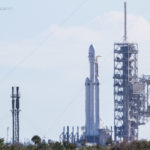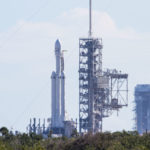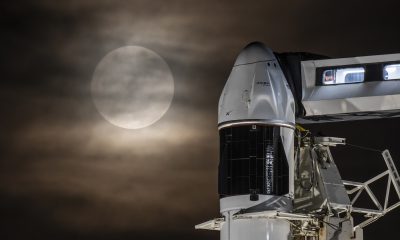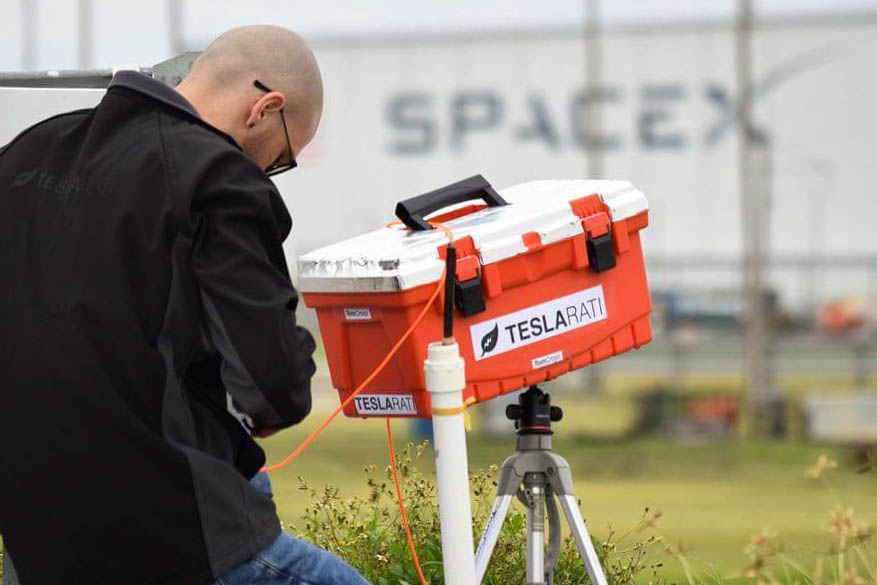

Lifestyle
A journey to capture SpaceX’s first Falcon Heavy static fire test
As a launch photographer that has a work schedule as volatile as the rocket fuel being used by the very same subject matter that I’m trying to capture on film, having a plan-B in place comes with the territory. For hours, everything can appear routine, as I cycle through my usual list of photo preparations. But in the blink of an eye, the launch team could discover an issue that disrupts the entire day. That couldn’t be truer than my recent attempts to cover the highly anticipated SpaceX Falcon Heavy static fire test.
In those instances when unexpected circumstances can change long-prepared plans, any work that has been conducted up to that point has to be repeated at the next launch attempt. It happens often and it’s part of the gig. Needless to say, this profession takes immense passion and patience. It also helps to have a home life that’s equally patient and supportive.
The whirlwind of excitement began in early January when SpaceX’s Falcon Heavy was scheduled for its first test fire from the Kennedy Space Center in Florida. Checking Twitter in the pre-dawn hours of an overcast Cape Canaveral day, I quickly learned that any opportunity to hear the deafening roar of Falcon Heavy’s 27 Merlin engines ignite would have to wait until the next day. The weather was unpleasant; the skies were saturated in a thick haze of dreary gray, and the birds were eerily silent around Kennedy Space Center’s neighboring Merritt Island Wildlife Refuge.
Falcon Heavy’s test wasn’t meant to be that day. Or in the days following.

Nasa’s VAB visible in the background from Black Point Wildlife Drive at Merritt Island Wildlife Refuge. (Photo/TomCross)
The nature preserve surrounding the Kennedy Space Center has well-maintained gravel roads, pathways, boardwalks, and pull-offs, each with gorgeous views of an untouched Florida landscape. It’s a popular location for birdwatchers and wildlife photographers.
My journey to this location involves an hour-long drive through suburbs and rural areas, and a $10 entrance fee to the nature preserve. Gone are any signs of civilization, drowned in the silence of a peaceful Floridian backdrop of marshland and the occasional alligator making its way across gravel roads.
The weather ahead of Falcon Heavy’s second attempt at a test launch couldn’t be more perfect. Being one of the first to arrive on the scene, I had ample time to claim stake to a perfect vantage point for the perfect Falcon Heavy shot from the rooftop of my vehicle. Five Instagram stories into my stay and admittedly a few shameless selfies, the rest of the photojournalists began to arrive. It wasn’t long before a group of vacationers and sea of photographers arrived with cameras in tow and sights set on the Falcon Heavy launch pads.

To get a better view of the rocket engines during the static fire, I posted on top of my vehicle. (Photo/ Marcus Cote, @marcuscote_photo)

Through a thick haze, Falcon Heavy can be seen venting LOX (Liquid Oxygen). (Photo/TomCross)
As Falcon Heavy began venting LOX (Liquid Oxygen), a frenzy of rapid-fire shots immediately followed. The beast was breathing and would soon fire, so we thought.
A comment from one of the people in the crowd suggested that the large plume of LOX coming from SpaceX’s Falcon Heavy was a normal occurrence. The rumors began trickling in: ‘Falcon Heavy scrubbed for the day’ came first. Then, ‘dynamic loads’ cited in the next rumor.
Call it optimism or denial, every ounce of me rejected the notion that Falcon Heavy would not be firing today. Afterall, we saw the rocket venting and there was no confirmation of any sort that was making its way out of Cape Canaveral.
It wasn’t until we received word that a bug related to the hold-down clamp was the root cause for the cancellation. These clamps serve the critical function of firmly holding the rocket to the launch pad during static fire testing. If this component malfunctions, the rocket could potentially leave the pad. The attempt was scrubbed and rescheduled for another day.
My journey home had me pondering what I’d change for the next attempt.
The day had come for yet another Falcon Heavy static fire attempt. This time, I was armed with a mental image of the exact location of where to park and the exact steps needed for set up. I remembered to frame the image in a way that allows me to crop-out SpaceX’s competitor – United Launch Alliance’s (ULA) launch facilities. While we’re granted press access to SpaceX launches, we are prohibited from taking images of other companies’ launch facilities from the location of SpaceX’s launch pads. The same is true while we are in ULA locations: we can’t take images of SpaceX. So I maintain this unspoken rule while photographing Falcon Heavy out of respect for SpaceX and their brand. In some cases, it’s fitting to have the additional launch facilities in the image, but for my purposes of covering Falcon Heavy, it’s not.
- Part of my planning is to make sure that I can crop out ULA launch facilities. (Photo/TomCross)
- Falcon Heavy vertical at SpaceX Launch Complex 39A with ULA launch facility in the background. (Photo/TomCross)
Approximately 40 minutes into my drive to Cape Canaveral, or 15 miles from my setup location, I received a tweet that informed me of Falcon Heavy’s cancellation. I made a quick U-turn and hurried back home, where I signed up for SpaceX’s upcoming HispaSat launch that’s slated for mid-February. SpaceX is still serving customers regardless of Falcon Heavy’s delay and the rumor of Zuma’s failure.
The same sequence of extreme excitement that quickly translated to disappointment occurred in the days following. After a few more cancellations, I was in much need of a visit to the happiest place on Earth – Disney World.
If you ever get the opportunity to visit the Disney World theme parks in Orlando, Florida, a ride on Mission Space at Epcot is a must, especially if you’re a space nut. The ride is a launch simulator that takes you around the Earth and Moon, as you awake from a hypersleep state and find yourself inside an asteroid field. The ride is incredible. In fact, local astronauts along with NASA helped Disney’s Imagineering team develop the ride. Most notably, Story Musgrave who I had the pleasure of having coffee with in the past, was commissioned to help with the ride’s theme.
As Falcon Heavy’s schedule continued to drift further into the future, United Launch Alliance (ULA), SpaceX’s competitor, was launching a missile-detecting satellite to geostationary orbit about 23,000 miles in altitude. I hadn’t planned on attending this launch but the weather was beautiful and I was long overdue for some photography fun.
I gathered my gear, drove over to the coast to try out a new public location called Parrish Park / Max A. Brewer bridge. I made sure to explain who ULA was to our Instagram followers after a poll suggested that the majority of our fans did not know who the ULA was.
As I arrived at my new location, there were already rows of vehicles lined up along the shoreline of the river. I drove across the bridge on several occasions to find the perfect spot for stationing my cameras. I got in position 45 minutes before launch, unloaded my gear, attached my Miops Mobile Remote for a streak image, and tested the camera exposure setting. My fingertips were becoming increasingly more numb from prolonged exposure to the cold nighttime air, yet I still managed to attach my other camera to the tripod.
A couple walking past complimented me on my setup. After a few shots with my zoom-camera, the couple began walking toward me and asked if I heard about the launch scrub.
“Come on, it’s been too much lately!” immediately sounded off from my mouth. I was in disbelief. Sure enough, word soon got out that the launch would be rescheduled.
I heard the shutter of my long-exposure camera slam shut, as if it too was in utter disbelief of the recent events taking place, or lack thereof. I packed up and drove home, left only with the images in my mind of what that evening’s image could have looked like. And a life lesson that can only be attained through experience.
Bring hand warmers next time.
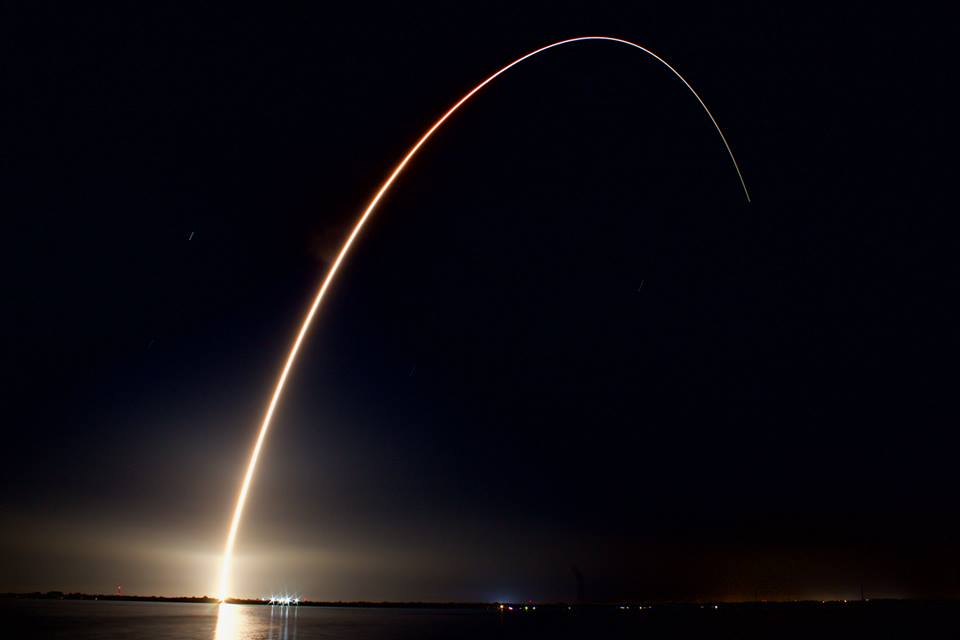
A streak image of a ULA launch in December 2016. (Photo/TomCross)
Elon Musk
X account with 184 followers inadvertently saves US space program amid Musk-Trump row
Needless to say, the X user has far more than 184 followers today after his level-headed feat.
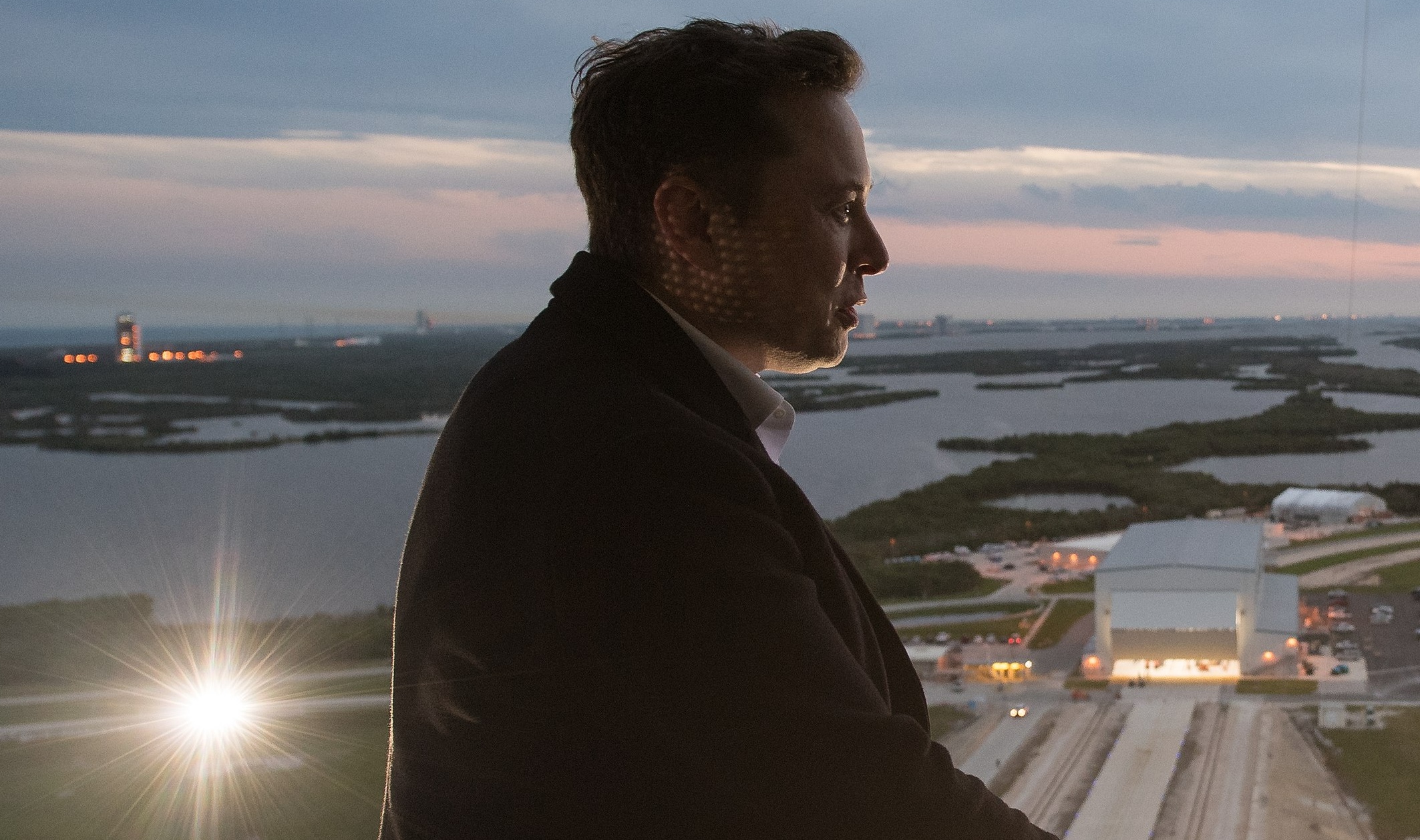
An X user with 184 followers has become the unlikely hero of the United States’ space program by effectively de-escalating a row between SpaceX CEO Elon Musk and President Donald Trump on social media.
Needless to say, the X user has far more than 184 followers today after his level-headed feat.
A Near Fall
During Elon Musk and Donald Trump’s fallout last week, the U.S. President stated in a post on Truth Social that a good way for the United States government to save money would be to terminate subsidies and contracts from the CEO’s companies. Musk responded to Trump’s post by stating that SpaceX will start decommissioning its Dragon spacecraft immediately.
Musk’s comment was received with shock among the space community, partly because the U.S. space program is currently reliant on SpaceX to send supplies and astronauts to the International Space Station (ISS). Without Dragon, the United States will likely have to utilize Russia’s Soyuz for the same services—at a significantly higher price.
X User to the Rescue
It was evident among X users that Musk’s comments about Dragon being decommissioned were posted while emotions were high. It was then no surprise that an X account with 184 followers, @Fab25june, commented on Musk’s post, urging the CEO to rethink his decision. “This is a shame this back and forth. You are both better than this. Cool off and take a step back for a couple days,” the X user wrote in a reply.
Much to the social media platform’s surprise, Musk responded to the user. Even more surprising, the CEO stated that SpaceX would not be decommissioning Dragon after all. “Good advice. Ok, we won’t decommission Dragon,” Musk wrote in a post on X.
Not Planned, But Welcomed
The X user’s comment and Musk’s response were received extremely well by social media users, many of whom noted that @Fab25june’s X comment effectively saved the U.S. space program. In a follow-up comment, the X user, who has over 9,100 followers as of writing, stated that he did not really plan on being a mediator between Musk and Trump.
“Elon Musk replied to me. Somehow, I became the accidental peace broker between two billionaires. I didn’t plan this. I was just being me. Two great minds can do wonders. Sometimes, all it takes is a breather. Grateful for every like, DM, and new follow. Life’s weird. The internet’s weirder. Let’s ride. (Manifesting peace… and maybe a Model Y.)” the X user wrote.
Lifestyle
Tesla Cybertruck takes a bump from epic failing Dodge Charger
The Cybertruck seemed unharmed by the charging Charger.
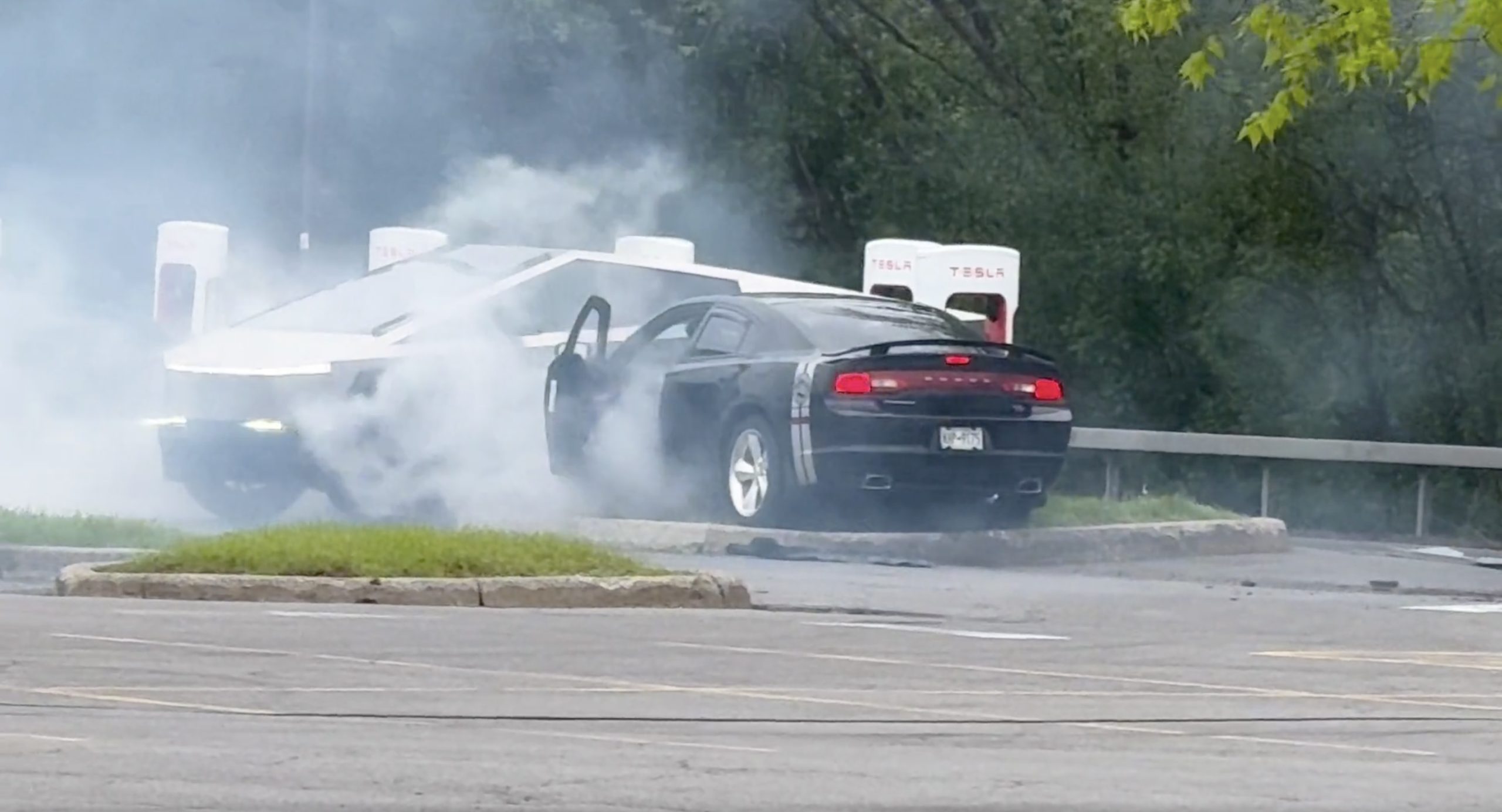
There comes a time in a driver’s life when one is faced with one’s limitations. For the driver of a Dodge Charger, this time came when he lost control and crashed into a Tesla Cybertruck–an absolute epic fail.
A video of the rather unfortunate incident was shared on the r/TeslaLounge subreddit.
Charging Charger Fails
As could be seen in the video, which was posted on the subreddit by Model Y owner u/Hammer_of_something, a group of teens in a Dodge Charger decided to do some burnouts at a Tesla Supercharger. Unfortunately, the driver of the Charger failed in his burnout or donut attempt, resulting in the mopar sedan going over a curb and bumping a charging Cybertruck.
Ironically, the Dodge Charger seemed to have been parked at a Supercharger stall before its driver decided to perform the failed stunt. This suggests that the vehicle was likely ICE-ing a charging stall before it had its epic fail moment. Amusingly enough, the subreddit member noted that the Cybertruck did not seem like it took any damage at all despite its bump. The Charger, however, seemed like it ran into some trouble after crashing into the truck.
Alleged Aftermath
As per the the r/TeslaLounge subreddit member, the Cybertruck owner came rushing out to his vehicle after the Dodge Charger crashed into it. The Model Y owner then sent over the full video of the incident, which clearly showed the Charger attempting a burnout, failing, and bumping into the Cybertruck. The Cybertruck owner likely appreciated the video, in part because it showed the driver of the Dodge Charger absolutely freaking out after the incident.
The Cybertruck is not an impregnable vehicle, but it can take bumps pretty well thanks to its thick stainless steel body. Based on this video, it appears that the Cybertruck can even take bumps from a charging Charger, all while chilling and charging at a Supercharger. As for the teens in the Dodge, they likely had to provide a long explanation to authorities after the incident, since the cops were called to the location.
Lifestyle
Anti-Elon Musk group crushes Tesla Model 3 with Sherman tank–with unexpected results
Ironically enough, the group’s video ended up highlighting something very positive for Tesla.
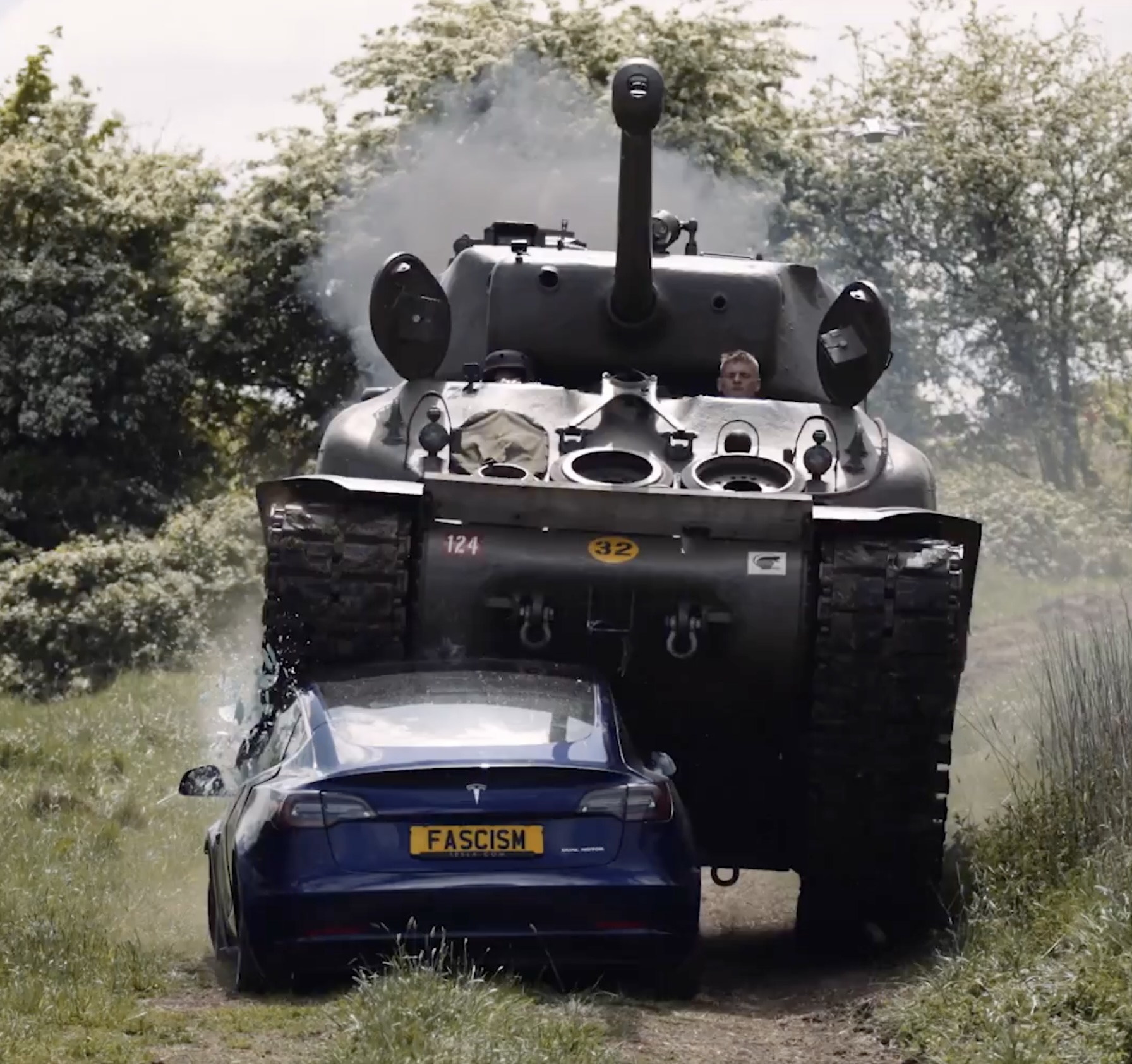
Anti-Elon Musk protesters and critics tend to show their disdain for the CEO in various ways, but a recent video from political action group Led By Donkeys definitely takes the cake when it comes to creativity.
Ironially enough, the group’s video also ended up highlighting something very positive for Tesla.
Tank vs. Tesla
In its video, Led By Donkeys featured Ken Turner, a 98-year-old veteran who served in the British army during World War II. The veteran stated that Elon Musk, the richest man in the world, is “using his immense power to support the far-right in Europe, and his money comes from Tesla cars.”
He also noted that he had a message for the Tesla CEO: “We’ve crushed fascism before and we’ll crush it again.” To emphasize his point, the veteran proceeded to drive a Sherman tank over a blue Tesla Model 3 sedan, which, of course, had a plate that read “Fascism.”
The heavy tank crushed the Model 3’s glass roof and windows, much to the delight of Led By Donkeys’ commenters on its official YouTube channel. But at the end of it all, the aftermath of the anti-Elon Musk demonstration ended up showcasing something positive for the electric vehicle maker.
Tesla Model 3 Tanks the Tank?
As could be seen from the wreckage of the Tesla Model 3 after its Sherman encounter, only the glass roof and windows of the all-electric sedan were crushed. Looking at the wreckage of the Model 3, it seemed like its doors could still be opened, and everything on its lower section looked intact.
Considering that a standard M4 Sherman weighs about 66,800 to 84,000 pounds, the Model 3 actually weathered the tank’s assault really well. Granted, the vehicle’s suspension height before the political action group’s demonstration suggests that the Model 3’s high voltage battery had been removed beforehand. But even if it hadn’t been taken off, it seemed like the vehicle’s battery would have survived the heavy ordeal without much incident.
This was highlighted in comments from users on social media platform X, many of whom noted that a person in the Model 3 could very well have survived the ordeal with the Sherman. And that, ultimately, just speaks to the safety of Tesla’s vehicles. There is a reason why Teslas consistently rank among the safest cars on the road, after all.
-

 Elon Musk4 days ago
Elon Musk4 days agoTesla investors will be shocked by Jim Cramer’s latest assessment
-

 News1 week ago
News1 week agoTesla Robotaxi’s biggest challenge seems to be this one thing
-

 Elon Musk2 weeks ago
Elon Musk2 weeks agoFirst Look at Tesla’s Robotaxi App: features, design, and more
-

 News2 weeks ago
News2 weeks agoWatch Tesla’s first driverless public Robotaxi rides in Texas
-

 News2 weeks ago
News2 weeks agoSpaceX and Elon Musk share insights on Starship Ship 36’s RUD
-

 News1 week ago
News1 week agoWatch the first true Tesla Robotaxi intervention by safety monitor
-

 News2 weeks ago
News2 weeks agoTesla has started rolling out initial round of Robotaxi invites
-

 Elon Musk2 weeks ago
Elon Musk2 weeks agoTesla to launch in India in July with vehicles already arriving: report


